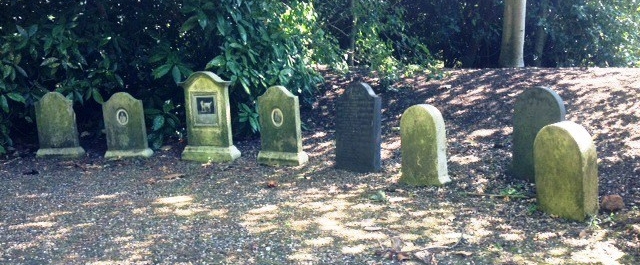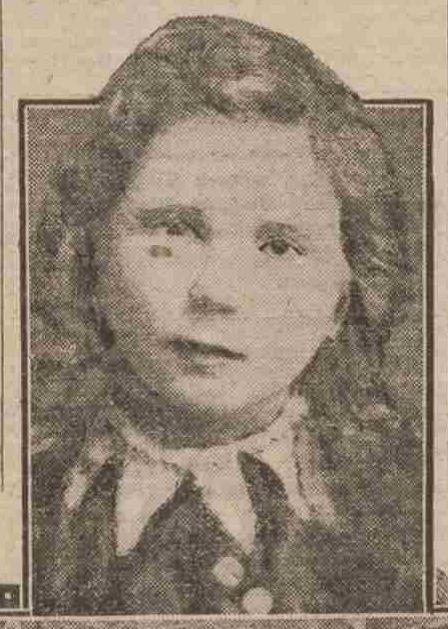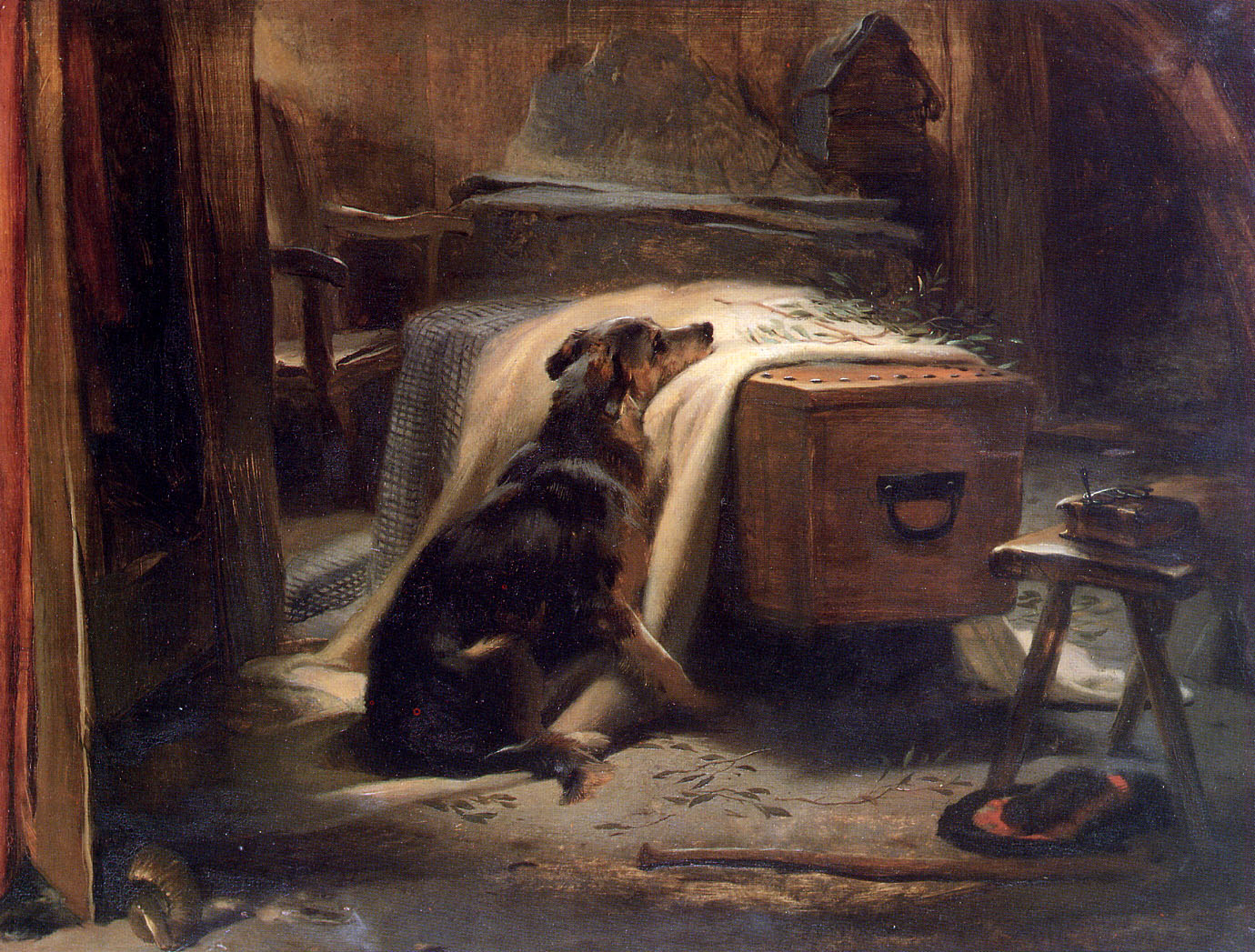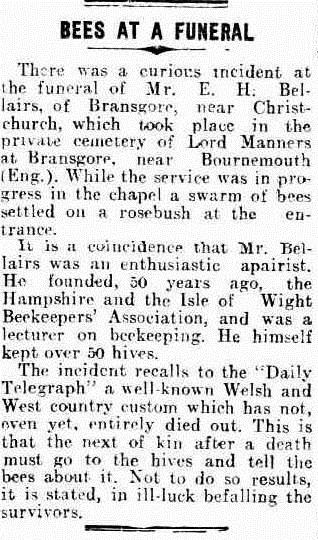Right, dear reader, prepare yourself for a beast of a post (pun most certainly intended).
For some people, losing a pet can be as devastating as losing a human member of the family. Londoners lacking gardens could lay their beloved animals to rest in Hyde Park's pet cemetery or Ilford Animal Cemetery. In the gardens of Marlborough House (now home to the Commonwealth Secretariat) a semi-circle of tiny headstones memorialize Bonny the Bunny, Caesar, Togo, Marvel and Poor Little Boxer et al, all of whom were once adored pets of Queen Alexandra. The Tower of London has one of the oldest pet cemeteries in the country and people have been known to inter their pets' bodies with their own after death.
 |
| Pet cemetery at Marlborough House |
They provide companionship, have been known to detect disease and have even saved us from danger. So it’s hardly surprising that their loss affects some people so acutely. While certain animal species are known to mourn their own, what of those who appear to mourn the loss of a human?
"Animals are such agreeable friends - they ask no questions; they pass no criticisms" - George Eliot
Greyfriars Bobby, a Skye terrier, famously mourned his human friend John Gray for 14 years until his own death, while Hachikō (an Akita) waited patiently at the station for owner Professor Ueno daily for nine years after the professor died. But is the phenomenon really as it appears? Are pets genuinely saddened at our passing or do they merely pick up on an emotionally charged event, which we humans then anthropomorphise to make our own mortality more palatable? Sentimentality aside, some pets don't mourn but rather eat their owners after death. Make your own mind up with these intriguing and curious tales (tails?!) from various newspaper archives.
Man’s (and Woman’s) Best Friends
In February 1924, 11-year old Vera Hoad left her Chichester home for a music lesson. A “good obedient girl, a proper home bird”, Vera attended her lesson and left around 18h40 but was never seen alive again. Her snow-covered body was discovered three days later in a Graylingswell field where she'd been murdered. The little girl’s funeral was an emotionally charged affair attended by thousands. Those unable to fit into the packed church spilled outside singing hymns while local shops and houses drew their blinds out of respect.
As the service began, mourners noticed a brown dog slink up the aisle toward the trestles holding Vera’s coffin. One of Vera’s schoolmates called out, “Oh, it’s Vera’s Tango!” Tango was Vera’s favourite pet and had escaped the family home unnoticed to follow his young mistress’ funeral cortege to the church. The dog regularly accompanied Vera on walks and had helped search for her while she was missing. At the mention of his name Tango turned, whimpered and then returned his gaze upward to the small coffin, tail wagging. He was picked up and removed by the verger, who put him outside the vestry door, but Tango made his way back up the aisle and sat beneath the flower-covered coffin once more.
When a journalist from the Sunday Post interviewed the Hoad family in March 1924, he reported, “Whilst we were talking my attention was drawn to Tang [sic], Vera’s pet dog, who, disconsolate at the loss of his little mistress, was whining piteously. Since Vera had been missing he had hardly touched any of his food, and with canine instinct he seemed now to realise the awfulness of the tragedy”.
 |
| Vera Hoad |
 |
| Illustrated Police News Thursday 13 March 1924 |
In June 1942 a number of Australian papers reported that Nicky, a crossbred black Pomeranian, followed the hearse containing the body of his owner, Sevestiano D’Andrea, who’d been murdered in his Newtown grocery store. As the hearse sped up, so did Nicky and he was picked up by mourners making their way to Botany Cemetery for the service. The dog remained by the graveside throughout the ceremony and refused to budge, whimpering for the rest of the day. He then disappeared and didn’t return home.
That evening, agonized howls and whimpers were heard by residents living near the crematorium building. This went on night after night. Two local women, concerned by what was obviously a deeply distressed creature, entered the cemetery in the early hours of the fifth morning to find Nicky lying in front of the crematorium. He was weak and starving. One of the women reported, “He was stretched out, with his nose between his paws, and took no notice as we approached. When I patted him he looked up with bewildered brown eyes, and cried. He was so sad Jeannie and I cried too. My tears were dropping on him as I carried him back to our house. He made no attempt to resist, but refused food, and took no notice of our dogs". Nicky was transported to his owner’s brother-in-law’s home but attempted to jump out of the moving car as it passed the cemetery where his owner, Sevastiano, had just been interred.
 |
| The Old Shepherd's Chief Mourner by Edwin Henry Landseer (1837) |
Feathered Friends
From Sydney, Australia, comes the following story from December 1925 and is the only reference I could find involving a pigeon, however there are no names involved or even which hospital this incident is alleged to have occurred.
 |
| The News (Hobart, Tas) Wed 23 Dec 1925 |
In Australia's Northern Suburbs Crematorium, an astonishing sight met mourners attending the funeral of Captain John A. Johnson, former sea-captain, in July 1938. Ten wild birds flew into the chapel through beams of sunlight as Dr Johnson’s casket was being moved and “fluttering round the coffin, whistled joyously”. The birds continued this curious display for approximately a minute until the coffin was out of sight, before circling the catafalque and then upward to an architectural gap in the ceiling through which they disappeared.
Rev. A. J. Parker had actually noticed the birds earlier, commenting “Before the service I walked out of the vestry, and my attention was drawn to a shrub which was covered with birds. I could not say what kind they were”. Later described by a witness as starlings, the display was strangely moving but even odder was the late Dr Johnson’s hobby: he’d been an avid bird lover who spent hours befriending and feeding flocks of sparrows, doves and starlings in his north Sydney garden.
To be fair, both abovementioned incidents could easily be consigned to “File Under Strange Coincidence”, as could the next story, which involves winged creatures but not of the avian variety. This was widely reported in the Australian press (as well as the Nottingham Evening Post) from September to December 1930:
Back to birds, the Telegraph reported that Fred, an African Grey parrot, was prescribed a bird-friendly liquid version of Prozac twice daily help cope with the loss of his human owner George in November 2008. Animal experts believed Fred was traumatized by George’s disappearance and was suffering from separation anxiety, falling into a deep depression that caused him to pull his neck feathers out and bob his head up and down in distress. Channel 4’s programme Special Needs Pets later reported that after treatment, George’s wife, Ruth, had to carry Fred around the house to show him that George was no longer there.
Feline Friend?
Cats being generally aloof and marching to the beat of their own drum, it was a surprise to absolutely no one that I found no references to them mourning people (if anyone knows of any stories, feel free to post in the comments section). However I will include the story of the south London Cemetery Cat (reported in the Mudgee Guardian and North-Western Representative, 12 January 1933) because everyone likes a good Cemetery Cat, don't they? The enormous feline lived in the churchyard of Eltham Church and, black with white paws, he looked suspiciously like the cat belonging to a man buried in the same churchyard some time before (yup, the cat attended the funeral service in case you were wondering).
Despite being re-homed, Cemetery Cat returned repeatedly to the churchyard and began attending the funerals of complete strangers, watching over the coffins as they were lowered into the earth, escorting the mourners back to the cemetery gates and then disappearing into the undergrowth. One mourner visiting her family grave in the same churchyard ensured that a regular supply of meat and fish were left for Cemetery Cat.
(For the record, I'm not suggesting Cemetery Cat was mourning the dead and suspect he remained purely because the cemetery was his personal amusement park complete with the feline version of Deliveroo. I just liked the story)
Horses
In January 2017, 34-year old Wagner Figueiredo de Lima died following a motorcycle accident. Wagner was a semi-professional cowboy in his native Brazil and had an incredibly close bond with his faithful horse, Sereno, winning numerous shows together. By all accounts, Wagner and Sereno were best friends, with Wagner even sacrificing personal items so that he could afford Sereno's food. When Wagner’s brother, Wando, brought Sereno to the funeral the horse became visibly distressed, whinnying, shaking his head and swishing his tail as the eulogy was read. He then walked up to the hearse and placed his head on his old friend’s coffin, as if the full emotional comprehension that Wagner had passed had hit home. Wando said, “It was if the horse knew what was happening and wanted to say goodbye.” Various postings of the video has been viewed millions of times on Youtube.

While I keep an open mind about animals mourning us, part of me believes that they do. The case I found the most compelling of all these examples is Sereno the horse who, by gently laying his head upon Wagner's coffin, appears to genuinely feel the loss. I'm also particularly intrigued by Capt John Johnson's starlings - was their fluttering around his coffin merely a strange coincidence or had they come to say their final goodbyes?
November 2018: as a quick addendum to this post, another story of a mourning dog in China recently appeared in the news this month, link here.


































